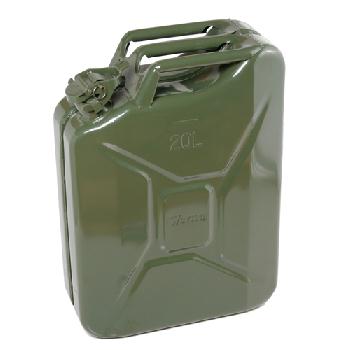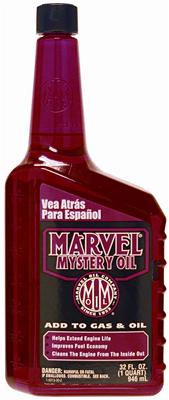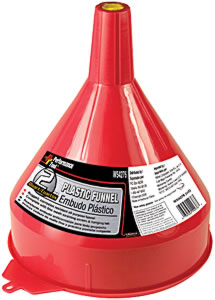when I was much younger there used to be 100- 130 octane labeled or rated AVGAS available at the local small plane section of the local air port for about twice what standard high test pump gas cost, we would purchase 15 gallons in 5 gallon jerry cans and mix in the fuel with 2-3 OZ of marvel mystery oil per jerry can, and use that in our race engines, it worked very well because it was high lead and high octane... the last time I went was decades ago, back in the 1970s,
While there are some high octane formulations of avgas, airplanes over the last 40 plus years have trended to lower compression ratio, so the "100-130 octane " avgas is not very common any more, in fact its damn rare!.
Also avgas is formulated to vaporize when it's cold with low barometric pressure. Not what you want on the ground. but they refused to sell it to auto racers,
at that particular time for some reason, at the time.
I was told it was due to terrorists ,using avgas , thats TOTAL B.S.

http://www.monstermarketplace.com/army- ... -jerry-can
https://vpracingfuels.com/product-category/fuels/racing-fuels/
http://garage.grumpysperformance.com/index.php?threads/octane-boosters.613/#post-12677
https://www.sunocoracefuels.com/fuel-finder?city=&state=Florida&zip=33470&fid=&range=300


History of AVGAS Grades
Avgas is gasoline fuel for reciprocating piston engined aircraft. As with all gasolines, avgas is very volatile and is extremely flammable at normal operating temperatures. Procedures and equipment for safe handling of this product must therefore be of the highest order.
Avgas grades are defined primarily by their octane rating. Two ratings are applied to aviation gasolines (the lean mixture rating and the rich mixture rating) which results in a multiple numbering system e.g. Avgas 100/130 (in this case the lean mixture performance rating is 100 and the rich mixture rating is 130).
In the past, there were many different grades of aviation gasoline in general use e.g. 80/87, 91/96, 100/130,108/135 and 115/145. However, with decreasing demand these have been rationalised down to one principle grade, Avgas 100/130. (To avoid confusion and to minimise errors in handling aviation gasoline, it is common practice to designate the grade by just the lean mixture performance, i.e. Avgas 100/130 becomes Avgas 100).
Some years ago, an additional grade was introduced to allow one fuel to be used in engines originally designed for grades with lower lead contents: this grade is called Avgas 100LL, the LL standing for 'low lead'.
All equipment and facilities handling avgas are colour coded and display prominently the API markings denoting the actual grade carried. Currently the two major grades in use internationally are Avgas 100LL and Avgas 100. To ease identification the fuels are dyed i.e. Avgas 100LL is coloured blue, while Avgas 100 is coloured green.
Very recently a new Avgas grade 82 UL (UL standing for unleaded) has been introduced. This is a low octane grade suitable for low compression engines. It has a higher vapour pressure and can be manufactured from motor gasoline components. It is particularly applicable to those aircraft which have STCs to use automotive gasoline.
http://www.centennialofflight.gov/essay ... Tech21.htm
http://www.osbornauto.com/racing/race2avgas.htm
I am going to attempt to address the controversy of aviation gasoline verses racing gasoline for use in race cars. Some racers use aviation gasoline which is fine for some applications but does have shortcomings. There are several grades of aviation gasoline (avgas) that we must identify before going any farther.
1. Avgas 80/87: this product is used in low compression ratio aircraft engines, contains little or no lead, is red in color, and should not be used in any automotive engine due to a low motor octane number of about 80.
2. Avgas 100/130: this product that can be used in some automotive engines. It has both research and motor octane numbers slightly over 100. Avgas 100/130 is green in color, contains four grams of lead per gallon, and is becoming harder to find.
3. Avgas 100 LL: the LL stands for "low-lead" which means two grams per gallon, low compared to the avgas 100/130 that it was designed to replace. It has research and motor octane numbers very similar to the 100/130 product previously discussed. The color is blue. This product sometimes has a high level of aromatics which can contribute to lazy throttle response and dissatisfaction of the consumer.
4. Avgas 115/145: this product was developed for high performance piston aircraft engines used in world war II and in the Korean war. It is very hard to find anymore due to lack of demand although it is of very high octane quality. The color is purple.
The remainder of this discussion will assume that our basis for comparison with racing gasoline is avgas 100/130 and/or 100 LL since they are both available and have acceptable octane quality for limited applications. When the word "avgas" is used, it will refer to avgas 100/130 or 100 LL.
Avgas is less dense than most racing gasolines. Instead of weighing about 6.1 to 6.3 pounds per gallon like racing gasoline, it weighs 5.8 to 5.9 pounds per gallon. The racer must compensate for this by changing to richer (larger) jets in the carburetor when changing from racing gasoline to avgas.
The other major difference is octane quality. Avgas is short on octane compared to most racing gasolines. Many racing engines with "quick" spark advance curves or with no centrifugal advance have more spark advance at low rpm than avgas and some racing gasolines can handle. The result is detonation, especially during caution periods in circle track racing because all of the spark advance is "in", rpm is low, and part throttle air fuel ratios are too lean for the operating conditions. If the driver does not "work" the throttle back and forth, pistons can be "burned" which melts away part of the aluminum piston material. Inadequate octane quality is one of the quickest ways to destroy an engine. Pistons can be severely damaged during one acceleration where detonation is present and the racer may not know what is happening until it is too late.
For maximum performance and power from a racing engine, racing gasoline will normally provide better performance than avgas. Avgas can be a good gasoline for some applications, but since most racers do not know the octane requirement of their engines, they would be better off with a "real" racing gasoline that will give them the overall resistance to detonation that they need to protect their investment. If someone has spent from $15,000 to $50,000 or more on their racing engine, it is foolish to cut corners on gasoline be sure you have a gasoline with adequate octane quality.
While there are some high octane formulations of avgas, airplanes over the last 40 plus years have trended to lower compression ratio, so the "100-130 octane " avgas is not very common any more, in fact its damn rare!.
Also avgas is formulated to vaporize when it's cold with low barometric pressure. Not what you want on the ground. but they refused to sell it to auto racers,
at that particular time for some reason, at the time.
I was told it was due to terrorists ,using avgas , thats TOTAL B.S.

http://www.monstermarketplace.com/army- ... -jerry-can
https://vpracingfuels.com/product-category/fuels/racing-fuels/
http://garage.grumpysperformance.com/index.php?threads/octane-boosters.613/#post-12677
https://www.sunocoracefuels.com/fuel-finder?city=&state=Florida&zip=33470&fid=&range=300


History of AVGAS Grades
Avgas is gasoline fuel for reciprocating piston engined aircraft. As with all gasolines, avgas is very volatile and is extremely flammable at normal operating temperatures. Procedures and equipment for safe handling of this product must therefore be of the highest order.
Avgas grades are defined primarily by their octane rating. Two ratings are applied to aviation gasolines (the lean mixture rating and the rich mixture rating) which results in a multiple numbering system e.g. Avgas 100/130 (in this case the lean mixture performance rating is 100 and the rich mixture rating is 130).
In the past, there were many different grades of aviation gasoline in general use e.g. 80/87, 91/96, 100/130,108/135 and 115/145. However, with decreasing demand these have been rationalised down to one principle grade, Avgas 100/130. (To avoid confusion and to minimise errors in handling aviation gasoline, it is common practice to designate the grade by just the lean mixture performance, i.e. Avgas 100/130 becomes Avgas 100).
Some years ago, an additional grade was introduced to allow one fuel to be used in engines originally designed for grades with lower lead contents: this grade is called Avgas 100LL, the LL standing for 'low lead'.
All equipment and facilities handling avgas are colour coded and display prominently the API markings denoting the actual grade carried. Currently the two major grades in use internationally are Avgas 100LL and Avgas 100. To ease identification the fuels are dyed i.e. Avgas 100LL is coloured blue, while Avgas 100 is coloured green.
Very recently a new Avgas grade 82 UL (UL standing for unleaded) has been introduced. This is a low octane grade suitable for low compression engines. It has a higher vapour pressure and can be manufactured from motor gasoline components. It is particularly applicable to those aircraft which have STCs to use automotive gasoline.
http://www.centennialofflight.gov/essay ... Tech21.htm
http://www.osbornauto.com/racing/race2avgas.htm
I am going to attempt to address the controversy of aviation gasoline verses racing gasoline for use in race cars. Some racers use aviation gasoline which is fine for some applications but does have shortcomings. There are several grades of aviation gasoline (avgas) that we must identify before going any farther.
1. Avgas 80/87: this product is used in low compression ratio aircraft engines, contains little or no lead, is red in color, and should not be used in any automotive engine due to a low motor octane number of about 80.
2. Avgas 100/130: this product that can be used in some automotive engines. It has both research and motor octane numbers slightly over 100. Avgas 100/130 is green in color, contains four grams of lead per gallon, and is becoming harder to find.
3. Avgas 100 LL: the LL stands for "low-lead" which means two grams per gallon, low compared to the avgas 100/130 that it was designed to replace. It has research and motor octane numbers very similar to the 100/130 product previously discussed. The color is blue. This product sometimes has a high level of aromatics which can contribute to lazy throttle response and dissatisfaction of the consumer.
4. Avgas 115/145: this product was developed for high performance piston aircraft engines used in world war II and in the Korean war. It is very hard to find anymore due to lack of demand although it is of very high octane quality. The color is purple.
The remainder of this discussion will assume that our basis for comparison with racing gasoline is avgas 100/130 and/or 100 LL since they are both available and have acceptable octane quality for limited applications. When the word "avgas" is used, it will refer to avgas 100/130 or 100 LL.
Avgas is less dense than most racing gasolines. Instead of weighing about 6.1 to 6.3 pounds per gallon like racing gasoline, it weighs 5.8 to 5.9 pounds per gallon. The racer must compensate for this by changing to richer (larger) jets in the carburetor when changing from racing gasoline to avgas.
The other major difference is octane quality. Avgas is short on octane compared to most racing gasolines. Many racing engines with "quick" spark advance curves or with no centrifugal advance have more spark advance at low rpm than avgas and some racing gasolines can handle. The result is detonation, especially during caution periods in circle track racing because all of the spark advance is "in", rpm is low, and part throttle air fuel ratios are too lean for the operating conditions. If the driver does not "work" the throttle back and forth, pistons can be "burned" which melts away part of the aluminum piston material. Inadequate octane quality is one of the quickest ways to destroy an engine. Pistons can be severely damaged during one acceleration where detonation is present and the racer may not know what is happening until it is too late.
For maximum performance and power from a racing engine, racing gasoline will normally provide better performance than avgas. Avgas can be a good gasoline for some applications, but since most racers do not know the octane requirement of their engines, they would be better off with a "real" racing gasoline that will give them the overall resistance to detonation that they need to protect their investment. If someone has spent from $15,000 to $50,000 or more on their racing engine, it is foolish to cut corners on gasoline be sure you have a gasoline with adequate octane quality.
Last edited by a moderator:

